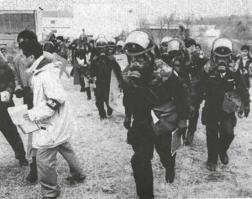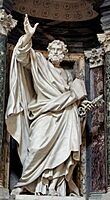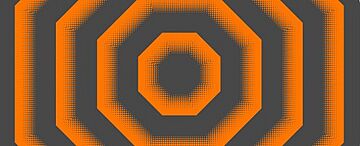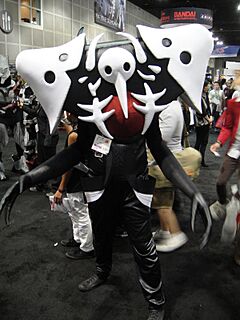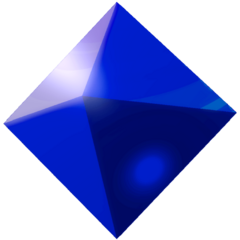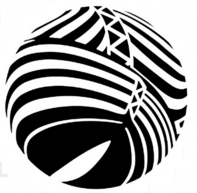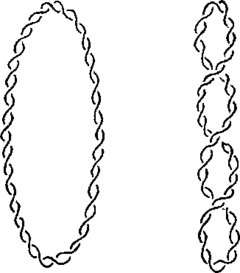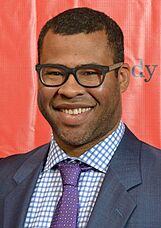Angels in Neon Genesis Evangelion facts for kids
The Angels (called Shito in Japanese, meaning "apostles") are powerful, mysterious beings from the anime series Neon Genesis Evangelion. They also appear in the manga version of the story.
In the original show, most Angels are enemies of humanity. They keep trying to reach the main base of a special group called Nerv, located in the city of Tokyo-3. Most Angels come from an entity named Adam. However, the last Angel, humanity itself, comes from Lilith, another powerful Angel. To fight back, Nerv created giant robots called Evangelions, or Evas. Like the Angels, Evas have a special energy shield called an AT Field.
Angels show up in the anime, manga, video games, and the Rebuild of Evangelion movies. Their names, revealed in the series, come from angels in old religious stories. Each Angel's look and powers are often similar to their namesakes in these ancient texts. People really like their designs, and they've even inspired other anime shows!
Contents
How the Angels Were Created
When they were making Neon Genesis Evangelion, the creators decided the story would be about a battle between powerful beings and humans. In early ideas, the enemies were called Apostolos. They were thought of as ancient objects left behind by an old species called the "First Ancestral Race." These enemies were more like simple weapons with very few living parts.
The creators might have been inspired by books like James P. Hogan's Giants series and Arthur C. Clarke's story "The Sentinel." The Apostolos were meant to be servants of a giant being called Adam, a divine guardian from a very old alien race. The director, Hideaki Anno, also got ideas from classic giant monsters like Gyaos from Gamera and Gaira from The War of the Gargantuas.
Originally, there were supposed to be twenty-eight enemies. The first one, Adam, was found in the Dead Sea area but was destroyed in a huge explosion fifteen years before the show starts. Early plans also included two Apostolos named Shateiel, the "Angel of silence," and Turel, "the rock of God." These ideas were later used for the Angels Ramiel and Sahaquiel.
The first episode was going to feature a fight between Eva-01 and an Angel named Raziel, but this was changed to Sachiel. Raziel was described as a "metal Angel" and looked more like a giant human. In a later episode, there was a plan for a big battle on the Moon against twelve Apostolos. Humans would realize they couldn't win, and a "promised time" would come. The number twelve was inspired by the twelve apostles in the book of Revelation. The idea of many Moon battles was dropped, but it was later used for a fight against nine mass-produced Evas in the 1997 movie The End of Evangelion.
Another early idea involved two ancient civilizations with advanced technology appearing on Earth before humans. The "First Ancestral Race" would create the Evangelions, which would then rebel and cause their creators to disappear. A "Second Ancestral Race" would then create the Spear of Longinus to try and defeat them, scattering sleeping Angels around the world in case anyone tried to restart the humanoids.
In the final version of the show, the enemies were called Shito (meaning "apostles") in Japanese, instead of Tenshi (the usual word for angels). However, the English word "Angel" was used in the show's computer screens and titles. In Christianity, "apostolos" means "sent messenger," referring to the twelve disciples Jesus chose. The Angels' names in the show are not those of Christ's apostles, but other angels from religious writings.
The director, Hideaki Anno, gave general ideas for each Angel's design. Their shapes reflected the feelings of Anno's generation and the mood in Japan during the 1990s. At that time, Japan's economy and society felt broken, and people didn't know why. This made the idea of an "enemy" unclear. Anno felt the enemy of 1990s Japan was not political or clearly defined, like the Aum Shinrikyō group that attacked the Tokyo subway with gas in 1995. The Angels and the character Gendo Ikari were shown as shapeless beings because Anno felt the idea of an "enemy" itself is undefined.
Artists like Mahiro Maeda and Yoshitō Asari designed many of the Angels. They tried to avoid making them look too human, which would have been harder to animate.
Angel Characteristics
Angels are living beings with a special atomic structure, meaning they act like both particles and waves, similar to light. At the start of the series, no one knows what their goals are or why they are called Angels. Nerv, the special agency, can't fully understand how they work. But all Angels are drawn to another Angel called Lilith, which is kept deep inside Nerv's headquarters.
Angels are very similar to humans genetically, with 99.89% matching human DNA. They can change their shape, from looking a bit like humans to being geometric shapes, and their sizes vary a lot. Many have a red glowing sphere called a "core," which is their main power source and also their weak spot. They also have something called the "fruit of life," which helps them heal quickly. Humans, who are also considered an Angel, have the "fruit of knowledge" instead.
Angels can create a powerful shield called an Absolute Terror Field, or AT Field. Evangelion units also have this shield. Angels can also heal their bodies. Their names and attacks were predicted in ancient documents called the Dead Sea Scrolls, which are held by a secret group called Seele. But few people at Nerv know about this. No one knows why Angels attack Tokyo-3 one at a time, never together. In the first episode, Nerv leaders Gendo Ikari and Fuyutsuki notice that Sachiel can think for itself, saying it wouldn't be a strong weapon otherwise.
Later in the series, Nerv members wonder if Angels are working together, but it seems they act on their own. However, Gendo Ikari thinks they are starting to become smarter. Some guides suggest a connection between Angels, with each one seeming to evolve from the previous one. The fact that they attack one by one might mean they know what the other Angels are doing. To figure out what an Angel is, Nerv checks a special "Blood Type: Blue" wave pattern.
Angels in Neon Genesis Evangelion
Adam
Adam is like the parent of most Angels. In the anime, it looks like a giant made of light, similar to an Evangelion. A research team found Adam in Antarctica and started studying its energy source. But during an experiment, they accidentally woke Adam up, causing a huge global disaster called the Second Impact. Adam was then reduced to a tiny, embryo-like state. A secret group called Seele was behind this event, as they were looking for a "path to Adam Kadmon" – a way to become like an ancient, undying god. Later, Adam's embryo is given to Gendo Ikari, who calls it "the key to the Human Instrumentality Project." Adam's spirit is put into the seventeenth Angel, Tabris.
In old stories, Adam was the first human created by God. The name Adam can mean "earth" or "red." In the show, Evangelions were created from Adam's biological material. In some old Jewish traditions, Adam is seen as a god-like being who can give life. Some believe that all things will return to Adam at the end of time.
Lilith
Lilith is the second Angel. It is kept deep inside Nerv's headquarters in a place called Terminal Dogma. Lilith's face is covered by a mask with seven eyes, which is the symbol of Seele. Lilith looks like a giant white human, with its hands nailed to a red cross. It has small, human-like legs instead of lower limbs. Few people know Lilith's true identity; even those who know about it are made to believe it is Adam. The spirit of Lilith is inside Rei Ayanami. When Rei's spirit joins Lilith's body, Lilith starts the Third Impact, an event where all human spirits combine into one being. In The End of Evangelion movie, Lilith's body joins with Rei, grows to the size of Earth, and creates a giant anti-AT Field.
In the video game Neon Genesis Evangelion 2, it's said that Lilith arrived on Earth by chance in a celestial object called the Black Moon. This, along with Adam's White Moon, was sent by an alien "First Ancestral Race." So, the Angels are actually the original inhabitants of Earth. The game also says some Angels wanted to reach Lilith to restart all life, while others had no specific goal, and some wanted to find their parent, Adam.
In ancient stories, Lilith was a female spirit of the night. In some Jewish texts, Lilith was Adam's first wife. The Angel Lilith's design was created by Mitsuo Iso. In the Rebuild of Evangelion movies, Lilith is present from the beginning. The Angels' goal in the Rebuild series is to reach and merge with Lilith, which is why they attack Tokyo-3. Lilith's look was changed in the Rebuild movies; in Evangelion 1.0, it has scars from experiments, and its mask looks like Sachiel's. Lilith, Rei, and Eva-01 have been compared to the idea of a "Great Mother" in psychology, representing protection and mystery.
Sachiel
Sachiel is the third Angel and the first to attack Tokyo-3, fifteen years after the Second Impact. Sachiel walks on two legs and has two movable arms. It has a disk-like face on its upper body and gills on its legs, which it can use in water or on land. When it reaches land, the United Nations forces attack it. Sachiel can survive strong attacks from tanks and rockets, even the powerful N² mine. The attack damages its face, but it quickly heals and replaces its face with a second movable disk.
After being attacked, Sachiel learns how fighter jets work and can copy their effectiveness, firing explosive beams. It can also make short jumps while staying low to the ground. Sachiel is strong in hand-to-hand combat and can use glowing "spears of light" that extend from its forearms. In the second episode, Sachiel fights Eva-01 and is defeated.
The name Sachiel means "covering of God." In religious stories, Sachiel is the angel of water. It's also part of the cherubim, who protect the tree of life with fire spears, which might have inspired the Angel's glowing spears. The creators first planned for Sachiel to fight at sea, but that idea was used for Gaghiel instead. Sachiel's design was inspired by an android from a manga called Wahhaman and the back of a cat. In the Rebuild of Evangelion movies, Sachiel is the fourth Angel.
Shamshel
Shamshel is the fourth Angel and the second to attack Tokyo-3. It looks a bit like an insect, combining features of a mollusk and a whale. Even though it has limbs, Shamshel flies slowly at a low height to avoid Nerv's radar. It has circular spots on its head that look like eyes, but it can hit targets accurately even when they are out of sight, so these spots aren't real eyes. Shamshel uses two glowing whip-like weapons that can drill and cut, even piercing Eva-01's body.
Shamshel is very intelligent, moving precisely and changing its actions based on the situation and its target. Eva-01 defeats Shamshel by piercing its core. Nerv scientists then study its body. Shamshel is made of a wave-like substance that matches blue light. Also, its DNA is 99.89% similar to human DNA.
The Angel Shamshel was inspired by Shamsiel, an angel believed to be the angel of the day. Its name might refer to its fight with Eva-01, which happens during the day and ends at sunset. Shamshel's appearance is similar to an Alien Bira from Ultraseven. In the Rebuild of Evangelion movies, Shamshel is the fifth Angel. Its body has glowing material inside and mechanical tentacles. During the fight, Shamshel cuts Eva-01's power cable. After it's defeated, its body turns into liquid, and a rainbow appears.
Ramiel
Ramiel is the fifth Angel. Its body is a perfect octahedron, which is a shape with eight faces, and it has a shiny, smooth, blue surface. A 17.5-meter-wide drill extends from its bottom, piercing Nerv's strong underground headquarters. Ramiel has a particle cannon that shoots a powerful beam of light from a gap in its body. Ramiel's core is hidden inside its body, unlike earlier Angels, showing that Angels can learn and evolve.
In the series, Ramiel attacks Eva-01 with its light beam before the robot even gets to the surface, meaning it can detect enemies underground. To fight it, Misato Katsuragi creates a plan called Operation Yashima. Ramiel attacks Eva-01 a second time, even when the robot is outside the expected attack area. In the end, Eva-01 defeats Ramiel with a powerful positron cannon.
Ramiel's design was inspired by a monster from the Return of Ultraman series. Its name, Ramiel, means "thunder of God" and refers to its powerful particle cannon. In the first Rebuild of Evangelion movie, Ramiel is the sixth Angel and can change its octahedron shape into many other forms. For the Rebuild design, the creators were inspired by a microorganism from the movie The Andromeda Strain.
Gaghiel
Gaghiel, the sixth Angel, appears in the Pacific Ocean and attacks a UN fleet that is carrying Eva-02 and, secretly, the embryo of Adam. Gaghiel looks like a sea creature with fins and a streamlined body, allowing it to move quickly through water. It has a small, disk-shaped face above its mouth, similar to Sachiel's. Gaghiel attacks the ships by ramming them and sinking them. When it gets close, it opens its huge mouth and crushes its enemies. Gaghiel's core is inside its mouth.
During the fight, Gaghiel jumps onto an aircraft carrier and attacks Eva-02. Gaghiel is 600 meters long, making it the largest Angel seen so far. To defeat it, Eva-02 works with the UN fleet. The robot, caught in Gaghiel's jaws, weakens the Angel's AT Field and forces its mouth open. Two warships then enter its mouth and fire at its core. The plan works, and Asuka Langley Soryu and Shinji Ikari defeat Gaghiel. This Angel appeared far from Tokyo-3 because of Adam's presence on the ships.
The name Gaghiel means "roaring beast of God" and is the angel of fish in old stories. This name fits its appearance as a beast fighting in the water.
Israfel
Israfel is the seventh Angel. It approaches Tokyo-3 by sea and is met by Eva-01 and Eva-02. Asuka's Eva-02 cuts it in half, but the Angel regenerates into two separate parts, both able to fight! Israfel then defeats both Evas, which retreat. The UN forces then attack Israfel's two parts, nicknamed Kō and Otsu, and temporarily stop them with N² weapons.
Israfel's main power is its ability to split, like a single-celled organism, and then rejoin. It can also change color and divide its core. The only way to defeat Israfel is a "double coordinated attack on its core." The two parts of the Angel are connected, sharing their actions and weaknesses. After regenerating, the Angel merges back into its original form. In the second fight, Israfel copies the Evas' weapons, firing rays and using its limbs as blades. Eva-01 and Eva-02 move in perfect sync, attacking the Angel. Israfel splits again, and the two Evas jump into the sky, delivering a synchronized kick that destroys both cores.
The seventh Angel is named after Israfil, the angel of music and resurrection, who blows a trumpet on Judgment Day. This relates to the Evas' synchronized attack, which is timed to a 62-second melody. Israfel's ability to split and regenerate might refer to its role in resurrection. The names Kō and Otsu are like A and B, used for the first two items in a series.
Sandalphon
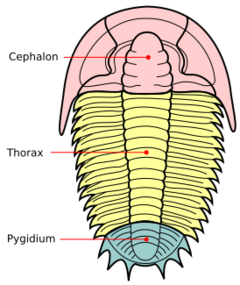
Sandalphon, the eighth Angel, is found inside a volcano crater in a human-embryo-like state, inside a cocoon. Nerv tries to capture it, but it wakes up and quickly changes shape. In its adult form, it looks like a flatfish, with fins and eyes on the left side of its back.
Sandalphon fights Eva-02 and shows great physical strength. Its core is hidden inside its body. During the fight, Asuka and Nerv members use the idea of thermal expansion (how things expand when heated) to defeat it. Eva-02 uses a special coolant to make Sandalphon shrink from the cold, damaging its body.
The Angel's name comes from Sandalphon, the angel of embryos in old stories. When it changed into its adult form, the creators added a sad, baby-like cry in the background.
The Angel's design was inspired by prehistoric creatures like the trilobite. The idea of trying to capture an enemy was originally planned for a different episode. According to a game guide, the Sandalphon episode suggests that sleeping Angels might be hidden all over the world.
Matarael
The ninth Angel, Matarael, looks like a spider or tick. It has a single main body with four long, thin limbs that are much bigger than the rest of it. Its main body is shaped like a section of an oval. It has nine eye-like drawings on its body, arranged in a triangle. One "central eye" is at the bottom, from which it pours a strong, yellow, corrosive liquid on its enemies. This acid is probably made by a gland inside the Angel.
Matarael is first detected in Sagami Bay by UN forces, who think it's the eighth Angel (they don't know about Lilith). Once on land, Matarael invades Tokyo-3 and tries to get into Nerv by melting a strong gate. It pours its acid into wells dug by Ramiel in an earlier episode, showing it learns from previous Angels. It fights Eva 00, 01, and 02, which defeat it with gunfire.
The name Matarael comes from an old book where it's described as the angel of rain. The Angel's name in Evangelion refers to its attack strategy, raining down powerful, corrosive acid on its enemies. Its body looks like an upside-down turtle.
Sahaquiel
Sahaquiel, the tenth Angel, appears in Earth's orbit above the Indian Ocean, using its body as a bomb. Its symmetrical body looks like a single-celled organism, like an amoeba. The Angel's body is huge, more than twelve times larger than an Eva, making Sahaquiel the biggest Angel in Neon Genesis Evangelion. Its skin is orange with small blue parts. It has three yellow-and-green eye-like shapes on its body. The Angel's core is in its central eye. Before attacking Nerv, Sahaquiel breaks off small pieces of its body that have an AT Field and high destructive power. It throws these pieces to the ground like missiles to adjust its path. Its ability to divide is similar to Israfel's. It can also mess with Nerv's equipment, destroying a satellite and jamming communications. When it reaches Tokyo-3, Sahaquiel is stopped by Unit 01, its AT Field is broken by Unit 00, and Eva-02 destroys its core, defeating it.
For Sahaquiel, the creators were inspired by the angel of the same name, mentioned as the guardian of the fourth heaven. This relates to the Angel's aerial attack strategy. Its elongated shape, which looks like a deformed eye, also connects to its guardian role. The name Sahaquiel means "Ingenuity of God," which might refer to how the Angel uses its AT Field. Its design was inspired by surrealist art. In the Rebuild of Evangelion movies, Sahaquiel is the eighth Angel. Its design was changed; in Evangelion 2.0, its AT Field is so strong it can bend light, and its body changes shape, showing human-like outlines on its surface.
Iruel
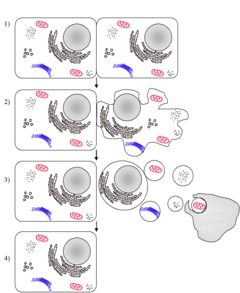
Iruel, the eleventh Angel, first appears as corrosive stains on a wall inside Nerv headquarters. At first, it acts like a tiny, oxygen-hating bacterium. Nerv tries to get rid of it by adding more ozone to the air, but it doesn't work. Unlike other Angels, Iruel is a colony of microscopic, nano-sized individuals, not just one being. These tiny parts, like bacteria, quickly evolve into a computer-like form.
After becoming like a living organism and an electronic circuit, Iruel tries to find the access code to the three Magi supercomputers, which are vital to Nerv's operations. It wants to activate a self-destruction program for the headquarters. Dr. Ritsuko Akagi creates a "reverse hacking" plan. She decides to speed up the Angel's evolution and then insert a program to make Iruel choose to live with the Magi System. Ritsuko's program defeats Iruel, saving the headquarters, and the computer returns to normal.
The animator Mitsuo Iso suggested a battle against an invisible enemy and the basic plot for this episode. In religious texts, Iruel is called the angel of fear. The sense of dread felt by Nerv members during its attack might refer to this.
Iruel's self-destruction program is like apoptosis (programmed cell death) in cells. Its coexistence with the Magi System is like symbiosis (two different organisms living together). Iruel's abilities, like self-replication and processing data, are similar to a universal "molecular assembler," a hypothetical tiny machine that could build anything atom by atom. This suggests Angels are technologically more advanced than humans.
Leliel
Leliel is the twelfth Angel. Its body has two parts with different features: one is a black-and-white striped floating sphere, and the other looks like a black shadow. The sphere is its real body, and the shadow on the ground is its main body. The Angel is 680 meters wide and only 3 nanometers thick. It creates an AT Field around its enemy, which makes the shadow appear. This shadow can swallow anything it touches. This happens because it uses an "inverted AT Field," which creates a parallel dimension called the Dirac Sea. During a fight, the dark shadow extends to Eva-01's feet and traps it inside its space. It's not clear if Leliel wants to absorb the robot or just contact its pilot, Shinji Ikari. Dr. Ritsuko Akagi creates a plan to destroy Leliel and get Eva-01 back. The plan involves dropping all N² bombs into the Angel's shadow, briefly messing with the AT Fields of the two Evas left inside the enemy's space. As the bombs count down, the floating sphere breaks, and Unit 01 emerges, causing the Angel to be defeated.
In old stories, Leliel is the angel of the night and is called the "prince of conception." The Angel's shadow and Eva-01 emerging from it, which looks like childbirth, relate to this. The name Leliel can mean "jaw of God," possibly referring to its ability to consume anything.
The image of a dark shadow in a summer setting and the geometric pattern of the Angel's sphere were inspired by Surrealism and optical art. To explain the Angel's nature, Ritsuko says its body is made of "strings." While trapped inside the Angel, Shinji talks to another version of himself, which is thought to be Leliel. This scene, set on a train, was inspired by a dream the assistant director had as a child. The two Shinji's in the scene represent different parts of his mind. The Dirac Sea in the anime was inspired by Paul Dirac's concept and a Japanese novel.
The Leliel episode was originally planned as a simple battle, but the creators decided to make it an episode where the Angel is more interested in humans than just destroying them. This was to avoid revealing too much about the Angels' true nature too soon.
Bardiel
Bardiel is the thirteenth Angel. It acts like a fungus or a parasitic bacterium, sneaking into the body of Eva-03 while it's being flown from the US to Nerv's Japanese headquarters. Bardiel's infection takes a while to show. Symptoms only appear during the robot's activation test, after its pilot, Toji Suzuhara, is exposed. After the infection, a crack opens on the Eva's back, showing glowing, melted threads inside.
Bardiel doesn't need an outside energy source and doesn't use Eva-03's battery. Its wave pattern is orange, like Leliel's, which made it hard to identify right away. As it moves towards Tokyo-3, Bardiel fights Eva-00, dripping a white, irritating liquid inside the robot. Bardiel isn't a single being acting alone, but a colony of microscopic Angels, like bacteria, working together, similar to Iruel. Eva-03 changes shape very quickly, which is usually impossible for humanoids, like its arms growing three times their normal size. The Angel is defeated by Shinji Ikari's Eva-01, which is activated by a new system called the Dummy System, destroying the infected Evangelion.
In old Jewish traditions, Bardiel is the angel who rules hail. In Western angelology, it's the angel of lightning. The Angel infecting Unit 03 during a storm cloud passage might refer to this. In the Rebuild of Evangelion movies, Bardiel is the ninth Angel.
Zeruel
Zeruel, the fourteenth Angel, is almost human-like. It has upper and lower limbs, but no hands or feet, a long, square body, and a skull-like opening at its neck. On its back are marks of wings, a symbol of angels. In battle, Zeruel shows incredible physical strength, becoming the second Angel (after Iruel) to invade Nerv's main section, Central Dogma, and the only one to do it with pure force. Zeruel can avoid radar, allowing it to enter the headquarters without being stopped.
Zeruel has two main ways of attacking: it shoots explosive light beams from its eyes, and it can use its thin upper limbs like blades, extending them from its shoulders and pulling them back after striking. Even though its core is exposed in the center of its chest, it has protective armor to hide it if it's in danger. Using this, Zeruel defends itself from Rei's Unit 00 when she tries to attack it with an N² bomb. This ability suggests the Angel knows about N² devices and that Angels might communicate with each other. Zeruel is defeated by Eva-01, which goes into a wild "berserk" state and eats it, absorbing its S² engine (a special power source).
Zeruel's first attack is similar to a move from Ultraman. In old stories, Zeruel is the angel of power, which fits its physical strength. Its name can mean "arm of God," referring to its second attack method. Its limbs are said to be as thin as paper, which might be a play on words in Japanese, where "paper" and "god" sound similar. In the Rebuild of Evangelion movies, Zeruel is the tenth Angel. Its design was updated; it has paper-like tentacles that wrap around its body like a mummy. During the fight, it eats Unit 00 with Rei Ayanami inside, then takes on the appearance of a human-like female figure, but is defeated by Eva-01.
Arael
Arael is the fifteenth Angel. It stays in orbit around Earth for its entire observation. Its body is glowing, so its actual appearance is never fully shown. At first, it stays still, far from Earth, with giant glowing wings. Asuka Langley Soryu positions her Eva-02 in Tokyo-3 to intercept it, but the Angel starts to attack her mind using a wave that radars can't detect.
The Angel makes Asuka relive her difficult childhood memories, trying to understand her mind and make her unable to fight. Ritsuko believes Arael's attack is an attempt to explore the human heart and contact the pilot. The powerful light beam is visible to humans, which is thought to be because of an AT Field with unknown properties. Units 02 and 00 attack Arael with their weapons, but its strong AT Field blocks them. Arael is finally defeated by Eva-00, which launches a weapon called Longinus' spear into orbit. The spear quickly reaches Arael and pierces its AT Field.
An official guide says, "If it appeared in satellite orbit with this strategy in mind or possibly if it had attained the ability to launch a psychological attack for this strategy, it can be said that this Angel is highly intelligent." In old stories, Arael is the angel of birds; its bird-like appearance in the show refers to this. The name Arael can mean "light" or "vision of God," and it's also seen as the angel of vision, which might refer to the light beam it uses to attack Asuka's mind.
During the show's creation, Arael's role changed. It was planned to appear in a different episode and use its twelve semi-transparent wings as a cutting weapon in an aerial fight. The psychological battle between the Angel and Asuka has been compared to ideas in psychology about how each person creates their own reality.
Armisael
Armisael is the sixteenth Angel, the second to last one in the original series. At first, it has a glowing, unclear circular shape that later settles above a valley, spinning around itself. Once it stops spinning, the Angel changes into a string-like form, which can stretch and move very fast. Using its speed, it attacks Unit 00, piercing its body near the middle.
Armisael tries to make physical and mental contact with its target, getting inside the robot and its pilot, Rei Ayanami. It's thought that Armisael continues Arael's psychic attack, launching a communicative attack on Rei. Under attack, Rei loses her senses, and inside her mind, she meets another version of herself, which is Armisael. It speaks to her gently using words from her own thoughts. The Angel asks Rei to join with it to ease the pain of the attack. After waking up, Rei activates a self-destruction process for her robot, causing its core to go out of control and reversing its AT Field. Rei causes a huge explosion that destroys the Angel and much of Tokyo-3.
In religious texts, Armisael is the angel of the womb; in Jewish tradition, a woman could ease childbirth pain by saying its name. During the battle, a strange organism that looks like parts of previous Angels grows on Eva-00's back. This means Armisael contains the genetic information of other Angels. Its shape is like a double helix ring, similar to human DNA, or a mathematical surface like a Möbius strip.
Just before the explosion, Eva-00 takes on Rei Ayanami's shape, while Armisael forms a halo around her head, like angels and saints in Christian art. It's not clear if this is Eva-00's true form or if it's because Armisael is controlling it. Armisael, confirming that Angels can communicate and learn from each other, understands the human mind. During the fight, it's cut by Eva-01's knife and makes a sound like a human cry.
Tabris
The seventeenth Angel, Tabris, is the last to appear in Neon Genesis Evangelion. In the anime, it is known as Kaworu Nagisa, the replacement pilot for Eva-02. After arriving in Tokyo-3, Tabris takes control of the robot to try and break into the deepest part of Nerv headquarters, where it believes Adam (whose spirit is inside Tabris) is kept. When it discovers that the white giant guarded in Nerv is actually Lilith, Tabris decides to stop its attack. It then leaves its fate to Shinji's Unit 01, allowing itself to be killed. According to an old text, Tabris is a demon and the angel of free will. This is shown in Evangelion by Tabris's human form and its choice to die at Shinji Ikari's hands, allowing humanity to survive.
Like Arael and Armisael, who tried to connect with Asuka's and Rei's minds, Kaworu tries to connect with Shinji's thoughts peacefully, using words to show friendly feelings. Tabris says that the Angels' AT Fields are "the walls of the heart" that everyone has. It then removes Shinji's AT Field, taking away the wall around his heart. Following earlier Angels who took different forms, Tabris took the form of a man by gathering information from its predecessors.
Lilin
Lilim, or Lilin, is the name Kaworu Nagisa uses to refer to human beings. According to old Jewish texts, the Lilim are the children of Adam and his first wife, Lilith. In The End of Evangelion movie, it is revealed that humans are the eighteenth and final Angel, and direct descendants of Lilith.
Angels in Rebuild of Evangelion
Other Angels appear in the Rebuild of Evangelion movie series, and the Angels from the original anime have different numbers. In the films, the Angels were made using 3D computer models. A rainbow appears when Angels are defeated. This symbol might refer to the biblical story of Noah, where God placed a rainbow in the sky as a sign of His promise. In the Rebuild series, the Angels don't have names in the story itself.
The new Angels in the films are:
- The third Angel. Its body is made of bones, like a snake skeleton. It has four small legs for walking, an Evangelion cockpit, a tail, and a long neck like wings that it uses to fly. It was found frozen in the Palearctic region and sealed by Nerv's European branch for study. To kill its enemies, the third Angel uses light beams and fights Eva-05 at Bethany base, where it is defeated. Its design was inspired by a monster from Ultraman.
- The seventh Angel looks like a grandfather clock. Its head is like Sachiel's mask and can spin like clock hands. It has a fake core that it uses as a trick and a real core hidden inside its body. The seventh Angel moves by freezing the sea surface and uses water to attack. Eva-02 defeats it. This Angel takes the place of Gaghiel from the classic series. It was designed to look like a "drinking bird" toy.
- The twelfth Angel, introduced in the movie Evangelion: 3.0 You Can (Not) Redo (2012), looks like black threads coming out of Mark.06. It is eventually defeated when it is eaten by Evangelion 13.
Angels in Other Stories
Angels appear in other works based on Neon Genesis Evangelion with different looks and roles. In the comic book version, some Angels like Sandalphon, Matarael, Iruel, and Leliel don't appear, and the total number of Angels is reduced to twelve.
In the video game Shin seiki Evangelion: 2nd Impression, a new Angel called the Original Angel is introduced. It changes forms. First, it has disc-shaped plates with small, scissor-like spines and insect-like limbs. Then it turns into a pupa, and finally, it becomes a flying insect. In its third form, it can split its AT Field and absorb the Evas' energy. All three of Nerv's Evas fight the Original Angel, which severely damages Eva-00 and Eva-02. In one part of the game, Shinji is almost defeated, but Eva-01 goes into a berserk state and fights it. Its body is like an invisible shadow, allowing it to revive after being defeated. The Original Angel's core is hidden inside a girl named Mayumi Yamagishi.
In the board game Neon Genesis Evangelion RPG, two new Angels appear: Iblis, a purple mollusk with an eye-shaped design, and Barakijal, an orange sphere. Other Angels appear in another board game: Adovaquiel, an aquatic spore that shoots energy; Zefon, a human-like Angel with an energy cannon; Atalibu, a dinosaur-like Angel that attacks with claws; and Azrael, a virus-shaped Angel that can control gravity.
Angels have also been used in video games not directly related to Evangelion, like MapleStory, Million Arthur, Monster Hunter Explore, Princess Punt Sweets, and Summons Board. In the Divine Gate video game, the Rebuild Angels are shown in human-like forms with different names. An enemy similar to Evangelion Angels appears in an episode of the anime Shinkansen Henkei Robo Shinkalion, combining designs from several Rebuild Angels.
In a Transformers X Evangelion online story, the ghost of the Decepticon Starscream takes over an Angel and changes it to look like his old body, renaming himself Angel-Scream before being defeated by Optimus Prime.
Cultural Impact
Merchandise and Legacy
Pictures of the Angels have been used to create many products, like action figures, T-shirts, bags, and models. In 2005, to celebrate the show's tenth anniversary, artist Mine Yoshizaki designed human-like action figures of Angels for a line called Angel XX, including Lilith and Sachiel dolls inspired by Rei Ayanami. The official Neon Genesis Evangelion store, Evastore, uses an Angel named Yuru-Shito as its mascot, which is also used for products and a role-playing game.
According to Japanese animation expert Guido Tavassi, the "revolutionary" look of the Angels is one of the show's big new ideas. He says the show used "a complete abstraction of the shapes of the enemies," which greatly influenced how enemies were designed in future robot shows. Matarael's design inspired Nobuhiro Watsuki to create a character's eye costume in the manga Rurouni Kenshin. A parody of Matarael appears in FLCL, another anime from the same studio. Leliel inspired the enemies in Gekiganger 3, aliens from a dimension called "Dark String Universe." The creators of Avatar: The Last Airbender also got ideas from Evangelion's Angels for the design of the panda Hei Bei.
Some experts have suggested that Evangelion influenced the Dolems in RahXephon and the Shadow Angels in Genesis of Aquarion. IGN compared a scene in Godzilla vs. Kong where King Kong is attacked underwater by Godzilla to the fight between Gaghiel and Eva-02. The same author also noted how an evolution of Algomon in the Digimon anime looks like some Evangelion Angels. Polygon compared the unfolded design of the flying monster Jean Jacket in Jordan Peele's movie Nope to Sahaquiel. On July 25, 2022, Slashfilm confirmed that Jean Jacket was specifically inspired by Neon Genesis Evangelion's Angels. Peele himself said he was influenced by their "hyper minimalism" and "biomechanical design flair." The creators of the video game Genshin Impact also got ideas from Ramiel's design for some of their creatures called Hypostasis.
See Also
 In Spanish: Anexo:Ángeles de Neon Genesis Evangelion para niños
In Spanish: Anexo:Ángeles de Neon Genesis Evangelion para niños
- List of Neon Genesis Evangelion characters
- Evangelion (mecha)
- Mahiro Maeda





